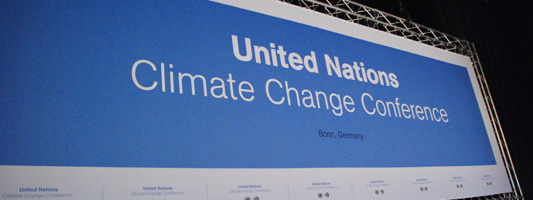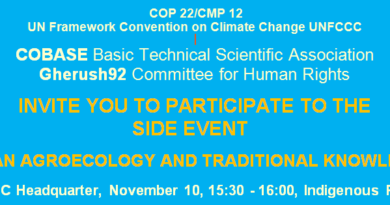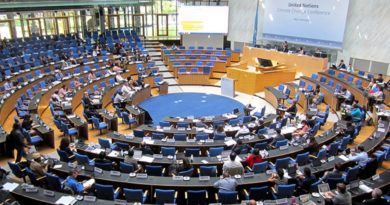Electrical Cities and Eco-productive and Agro-ecological Parks Against Climate Change with Bio-Circular Economy
Bonn Climate Change Conference – June 2015
Electrical Cities and Eco-productive and Agro-ecological Parks
Against Climate Change with Bio-Circular Economy – Source: IISD Reporting Services
This session, moderated by Stefano Mannacio, COBASE, considered how to use high efficiency electricity to design new settlements, and achieve co-benefits such as the elimination of combustions, the development of a bio-circular economy and the creation of agro-ecological and eco-productive parks, in view of resources scarcity, against climate change and desertification and to protect biodiversity and well-being.
Noting that 70% of the world’s population will live in urban areas in the next 30 years, Massimo Pieri, President, COBASE, stressed the need for climate actions to focus on cities. He highlighted the importance of combining traditional knowledge with modern technological knowledge to create sustainable solutions to climate change. Pieri drew attention to the need to model cities on natural systems that are asymmetrical, and thus more energy efficient. He explained that an electrical city’s energy production will rely on “hot and cold chains of energy,” and will run on low voltage systems. He also explained that these cities will need to construct power plants for local use, and that renewable energy production will only be permissible if the renewables are determined to have a proven net return of over 40%. Commenting on the day-to-day living in the electrical city, he described that: wastes will be recycled to produce biogas, other useable products and compost; all food will be local, organic, short-chain, and healing; no slaughterhouses will be permitted as intensive agriculture and animal husbandry increases greenhouse gas emissions; and vegetarianism will be encouraged.
Mannacio spoke on urban efficiency, biodiversity and traditional knowledge. Listing mitigation methods including green roofing and enhancing forestation in urban areas, he noted that mitigation is not enough and called for urban agriculture in vacant urban areas. He noted that this type of agriculture can preserve bioregional ecologies outside the city from being transformed into croplands and thus increase deforestation; and can be used as a tool to fight hunger and malnutrition in urban areas. Going beyond urban agriculture, he stressed the need to encourage agro-ecology which includes animal rearing, but does not allow for intensive agriculture, reiterating that the production of meat is not sustainable. Stressing that food consumption patterns are important for combating climate change, he noted the need to encourage vegetarianism. Mannacio then compared artificial ecology to natural ecology, describing the Amazon rainforest as the “most artificial environment in the world” as it was created by Indigenous Peoples who artificially fertilized farm fields by composting waste, which enhanced the biodiversity of the land. He stated that the Amazon is like a city, but with more sustainable consumption patterns.
In the discussion, participants raised issues including: how to measure and reduce the entropy of an urban system; how to operationalize such an electrical city; and the use of areas outside the urban area relative to the energy efficient electrical city.





